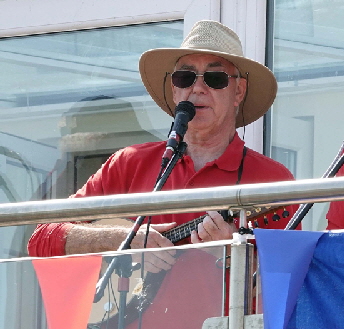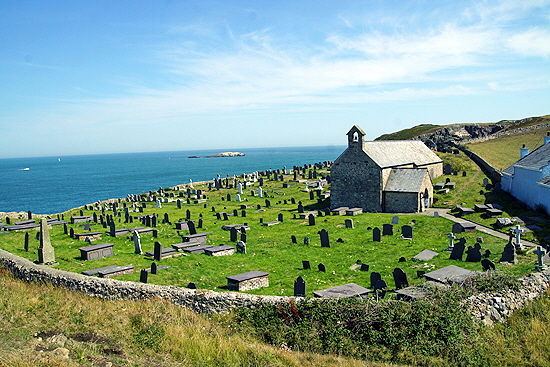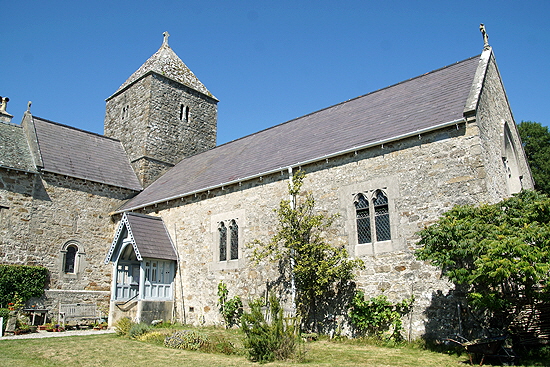|
Alphabetical List |
|
|
|
|
|
|
|
County List and Topics |
|
|
|
Please sign my Guestbook and leave feedback |
|
A number of years ago I decided to write about a couple of Isle of Man churches, cheekily annexing that self-governing island to England. I will probably add more when time permits. Nobody has complained. Yet. That is a relief. I remember one of the first pieces of feedback on my Guestbook all those years ago congratulated me on my coverage of a couple of Cornish churches and then asked me why I had described them as “English”. He turned out to be supporter of some sort of (peaceful, I believe) Cornish Nationalist group! I have no justification for including Anglesey on my website other than I have just spent a few days there in 2022 and visited a few churches. And, to be honest, it’s my website and I will do what I darned well like with it! In the process of drawing up my usual military-style church crawl plans I realised that there is a dearth of information out there about Anglesey’s churches - of which there are surprisingly many. In fact, how many people from outside the Principality visit Anglesey at all other than to catch the ferry from Holyhead? I had a list of sixteen potential church visits which I knew was over-ambitious. In the event I found seven of those open, four locked and five I didn’t get to through lack of time. The “Keyholder” app, an indispensable aid for finding out the access status of churches, showed a sea of grey blobs for Anglesey, indicating that none of the Keyholder community had been to them. Trawling websites for individual churches revealed a whole lot of access information that was completely out of date. Hence my frustrating visits to locked churches. And, by the way, they don’t seem to go in much for advertising the availability of keyholders on Anglesey. It is not a large island: under twenty miles from north to south and similar east to west. So you can get about the island quite easily and the roads are surprisingly good. Better in fact, than those of any English county I have lived in or visited for years. Anglesey, however, specialises in tiny churches in out of the way places, so navigating to a church to find it locked is especially frustrating. Anglesey has a history all of its own and it is not my intention to paraphrase here what is so easily discoverable on Wikipaedia!. Once controlled by the Druids, however, and out on a limb geographically it never became “Anglo-Saxon” or “Norman”. It was the Romans who ousted the Druids. It is largely bilingual and Celtic in culture. In fact, it is perhaps even more insular in its culture than the Isle of Man which was settled by Scandinavians to produce their own idiosyncratic Scando-Manx culture and its unique and almost lost Manx language. Like Man, however, Anglesey has, an atmosphere - a deeply rural atmosphere - and spirituality all of its own. If you don’t really ever feel in your bones any indefinable sense of spirituality or timelessness then Anglesey’s churches are perhaps not for you. An atheist myself, I feel those vibes all the time, mainly in these little places, with their sense of simple faith in a better life to come, buried in obscure corners of the country. I suspect that many Anglesey churches occupy long-sacred and once-Pagan sites. Christianity here arrived via the missionaries Cybi and Seiriol in the sixth century, rather later than the rest of Wales. Cybi was from Cornwall - or Dumnonia as it was then known - and Seiriol was Welsh. Not, of course, that Wales was a political entity at that time, any more than were England and Scotland. They established a foothold here some decades before St Augustine and his intrepid band were sent by Pope Gregory the Great to Kent in AD597. Anglesey’s early Christianity would have been Celtic in nature. The Synod of Whitby in AD664 established the supremacy of the Roman Christian tradition but the Celtic form was a long time dying - although doubtless the Roman method of calculating Easter became universal - and it is reasonable to suppose that its adoption in insular Anglesey was somewhat tardier in the English kingdoms. Any Church Crawler contemplating a visit to Anglesey needs to manage his or her expectations. Large Gothic-style churches are rare. Beaumaris was the only such church I visited and the only one vaguely reminiscent of its mainland counterparts, although there are one or two others. Simple two-celled churches are the order of the day. Towers are very much a minority, aisles a rarity. This was not a land of rich benefactors who felt the need to invest in the swifter passage of their immortal souls through purgatory! It is not a land, for that matter, well endowed with quarry stone; and transport overland in the absence of navigable rivers will have been tortuous and ruinously expensive. As I have said elsewhere on this site, carriage of stone exceeded the cost of the stone itself at about ten miles distance; and that was in England. This was no land for extravagance and it is significant that the only large churches - and towns - are in seaports; although Beaumaris was doubtless assisted by proximity to Edward I’s mighty castle. If you come here looking for the usual English mix of funerary monuments, elaborate bench ends and poppy heads, sculptures and gargoyles, rood screens and Norman arcades you are going to be disappointed (although Beaumaris has a fine set of misericords). Come with an open mind and an open heart and you might just be thrilled at being somewhere that is, in church visiting terms, different and off the beaten track. |
|
About my Visit |
|
It would be nice to be able tell you that my Anglesey odyssey was down to a deep desire to visit the churches. But it was more in the nature of seizing an opportunity. I am a singer with much more enthusiasm than talent. The male vocal group - “Millstone Grit” - of which I am a long-time member - was invited by John Williams, husband of our Music Director Jan, to sing at RNLI day in Cemaes Bay on the north shore of Anglesey in August 2022. We are an obliging lot and we all trekked over to Anglesey from Lincolnshire to perform at the harbour, as well as at a local hotel. Some of you will, I hope, have been to my “World’s Greatest Church Trail” pages. That epic church crawl (twenty five churches!) around Herefordshire and Worcestershire was also the result of a Millstone Grit singing commitment near Tewkesbury. Sometimes, visiting churches is about taking opportunities and beating the life out of them! |
 |
 |
|||||
|
Left: Millstone Grit at Cemaes Bay, singing and sweltering for a good cause. Right: Yours truly wearing the uniform of the Royal Canadian Mounted Police. You thought I only visited churches, didn’t you? |
||||||
|
The Strange Story of “Mona” |
||||||
|
In Welsh, Anglesey is called Ynys Mon or Mona Island. That is the name given to the island by the Romans who conquered it in the first century AD and who administered it (with a light touch, it seems) for three hundred years. I have already made references to the Isle of Man and strangely the name Mona is often associated with that island too. That’s a bit of a coincidence. How come? Well it all seems to go back to, of all people, Julius Caesar! He made a sea voyage from Ireland to Britain and in his account of that journey said this : " In the middle of this voyage is an island which is called Mona ; many smaller islands besides are supposed to lie there." This was also recorded by the historian Tacitus. To quote from the Manx Society Journal in 1880(!) " What utterly destroys this opinion (that Mona was the Isle of Man) is, that by Mona all the rest of the ancient writers certainly mean Anglesey, and not the Isle of Man ; for so do Pliny and Dion, who only make mention of the name and no more ; and that Tacitus’s Mona is Anglesey is beyond all dispute. It is therefore probable that Julius Caesar, who only visited the southern parts of Britain, might be mistaken in his relation, and appropriate that name to Man which belonged to Anglesey. Yet all over the Isle of Man you will find hotels, cafes and buildings referring to “Mona”! There is even a Castle Mona. Don’t you just love this stuff? |
|
|
||||||||||||||||||||||||||||||||||||||||||||||||||||||||||||||||||||||||||||||
|
Access: Status is from the “Keyholder” app which is available from the Google Playstore for a modest annual subscription. Be aware that statuses do change over time so it is always a good idea to check church websites before travelling a long way. Even “Open” churches are often (but not invariably) closed after 5.00 pm and may not open early. Also be aware that keyholders change quite often and that they do not undertake to be available all day every day - as I have sometimes found out to my cost! If you can contact them in advance before making a long journey that is always recommended. If you visit a church that is locked and no keyholder is listed at the church I have found that Churchwardens and Clergy can be helpful if their numbers are shown and if you ask them nicely! Sometimes they are surprised and gratified at your interest and have unpublished information and anecdotes.. Do always consider making a donation. If the Keyholder app says “Locked”, however, then in my experience your chances of gaining entry are minimal unless you make advance arrangements. “CCT” = Maintained by Churches Conservation Trust “Limited Opening Times” means that the church is open only on limited hours and/or days. Please note that these hours can be very limited - perhaps one or two hours a week. You must check with the church. Findability: 3 = Major Sign-posted Church 2 = Easy to find 1 = Hard to find. Do your homework before visiting. For contact details for individual churches visit http://www.achurchnearyou.com Access Information on this page is correct as at 20 August 2022 I cannot be held responsible for any abortive travel incurred by providing this information. |


